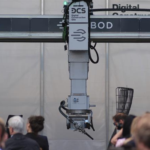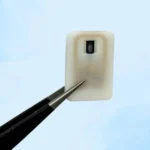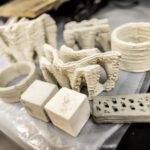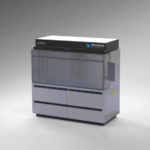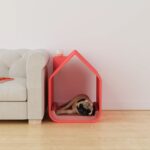Concentrated solar power plants work by reflecting sunlight from a mirror or lens into a receiver. Depending on the type of solar plant, this receiver can either sit on top of a tower, where the heat can be used to convert water into steam for driving a turbine. The turbine then extracts the rotational energy, and converts it into electricity.
Alternatively, mini-receivers can sit on top of individual reflector dishes where they convert the heat into power via a Stirling engine.
Regardless of the type, the components on these things can heat up and cool down quite a lot, and this thermal cycling can induce creep and fatigue into the components.
A multi-institute team has been developing 3D printed components for use in concentrated solar plants, and was awarded $4.6 million in funding to investigate the effects of fatigue of the printed components earlier this year.
The multi-institute project consists of researchers from USU, Carnegie Mellon University, Pennsylvania State University, the University of Michigan, University of California Davis and Sandia National Laboratories.
Three industry partners, Sunvapor Inc, Materials Resources LLC and AMETEK Specialty Metal Products are also involved in the project.
Receivers
The miniature receivers are being printed by the research team at UC Davis. The receiver sits in at the top of each dish and gathers the sunlight from the reflectors, and pumps the heat into a heat engine. Typically these receivers are manufactured using brazing, welding, and other bonding methods.
But at these temperatures, the components are often short lived.
“You can think about taking sunlight you receive on a summer day and concentrating that 1000 times,” said Professor Vinod Narayanan, Mechanical and Aerospace Engineering Professor at UC Davis.
“If you focus it onto an area of a few inches and you don’t have a mechanism to remove the heat, you can burn through steel. The point of the receiver is to take that heat and transfer it to a working fluid that can do something with that heat—either process heating or power generation.”
By utilizing AM for the fabrication of the receiver, the creep and the fatigue properties can be finely tuned, and as the parts are consolidated, the number of potential failure points can be reduced.
The project has built upon previous work in this area, which has included a printed heat exchanger (from Carnegie Mellon University), and miniaturized solar-thermal receiver built Oregon State University, and tested at the 7m solar dish at the Western Cooling Efficiency Center.

Creep and Fatigue
Creep is the tendency of a solid material to move or deform permanently under the influence of mechanical stress. Fatigue on the other hand,is the formation and propagation of cracks in a material due to cyclic loading.
Both of these can occur in materials undergoing heating and cooling, such as those found in components in a concentrated solar power plant.
This is why part of the funding will be dedicated to investigate these effects in 3D printed metal components for the solar plant project.

The creep and fatigue research will be undertaken by researchers at Utah State University.
The components will be manufactured using LPBF. When it comes to the actual end use parts, it is foreseen that using LPBF will be more cost-effective for fabricating the complex parts at the power plants.
For the research phase, the printed structural components will be subjected to repeated stress over time to determine the lifetime of the parts until they fail.
“This project is very important in advancing the future of renewable energy specifically for concentrated solar power plants,” said Nadia Kouraytem, assistant professor of mechanical and aerospace engineering at USU.
“It’s going to help us understand how we can implement the use of these advanced manufacturing techniques to fabricate metallic components for renewable energy.”


